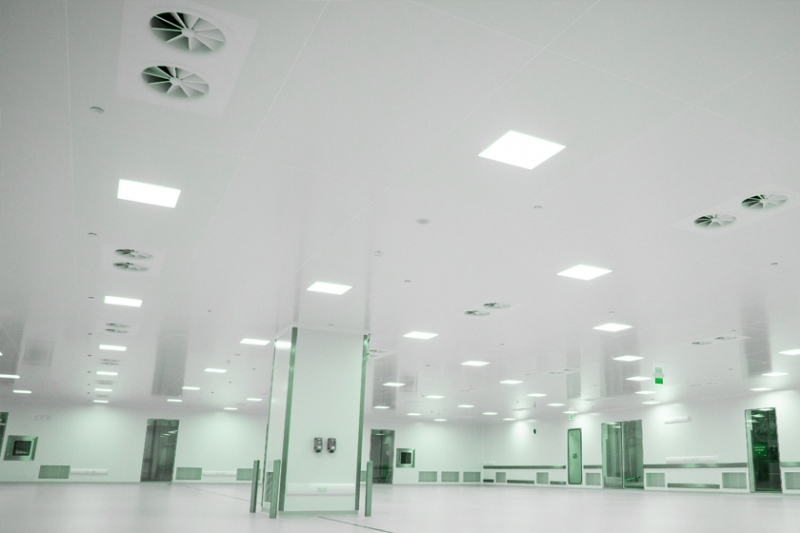The primary design goal of clean room is the particulate control
The size of these particles ranges from 0.001 to several hundred microns. Particles of different sizes behave differently as air moves through a room. For example, in an eight-foot high room, a particle in the 50-micron range might take 60 seconds to settle, while a 1-micron particle might take 15 hours to settle. Particles larger than 5 microns tend to settle quickly unless air blown.
A clean room differs from an ordinary ventilated/conditioned room mainly in three ways.
- Increased air supply: The increased air supply is an important aspect of particle control. Normal air-conditioning systems are designed for 0.5 to 2 air changes per hour essentially based on the occupancy level or as determined from the building exhaust levels. A clean room would have at least 10 air changes per hour and could be as high as 600 for absolute cleanliness. The large air supply is mainly provided to eliminate the settling of the particulate and dilute contamination produced in the room to an acceptable concentration level.
- The use of high efficiency filters: High efficiency filters are used to filter the supply air into a clean room to ensure the removal of small particles. The high efficiency filters used in clean rooms are installed at the point of air discharge into the room. Room pressurization is mainly provided to ensure that untreated air does not pass from dirtier adjacent areas into the clean room.
- Room pressurization: The clean room is positively pressurized with respect to the adjacent areas. This is done by supplying more air and extracting less air from the room than is supplied to it.
The greatest concern is that the actual particle deposits on the product, which can spoil it. Before any methods of contamination control of airborne particles can be applied, a decision must be made as to how critical this particulate matter is to the process or product. This is done by classification of room to requisite class level.
There is much more than above for instance the type of filtration, efficiency, airflow distribution and patterns, amount of pressurization, redundancy, noise issues and etc.











